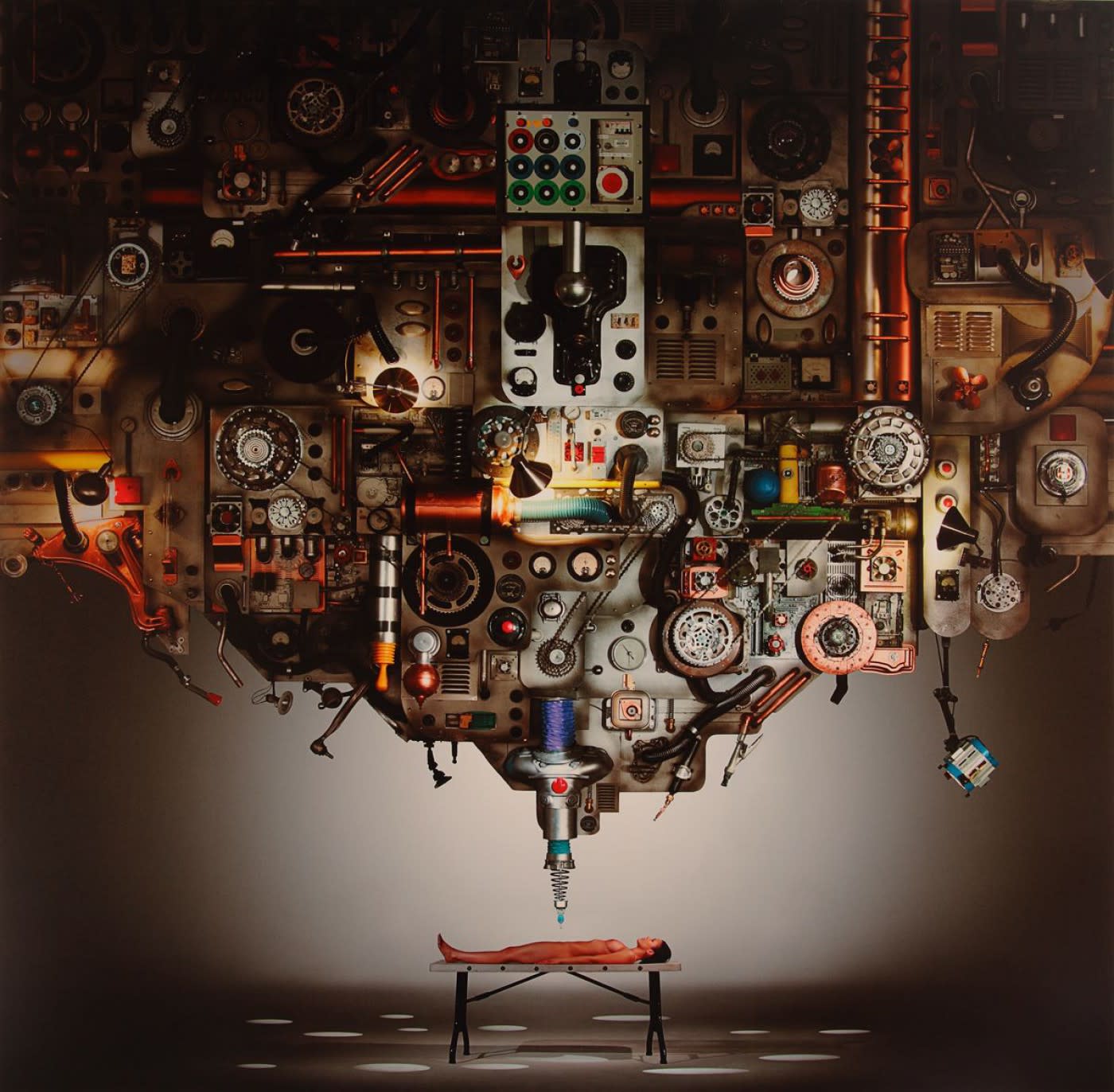Open a larger version of the following image in a popup:
 Click to enlarge
Click to enlarge
 Click to enlarge
Click to enlarge
Storm Thorgerson
Scrutiny, 2013
Archival Inkjet Print on Paper
975mm x 965mm x 2mm
Edition of 50
Copyright The Artist
'Scrutiny' - signed limited edition digital print by graphic artist Storm Thorgerson. The last work from Storm Thorgerson encapsulates so much about his vision as an artist. The image we...
'Scrutiny' - signed limited edition digital print by graphic artist Storm Thorgerson.
The last work from Storm Thorgerson encapsulates so much about his vision as an artist. The image we are presented with nominally asks questions of technology versus nature, and man’s paranoia of woman, but it also reveals much about his working process and his overall desire to make his audience think- to stop to consider, and to fire their imagination; their sense of the surreal. The machine Scrutiny was actually constructed by Thorgerson and his team at Storm Studios, there is no photoshop/ computer generated malarkey here, just straightforward photography; Thorgerson considers this more real.
"I want our productions to tell a story. My goal is to invest a picture with ambiguity. To make people curious. To make them want to look again."
'Scrutiny' is an exploration of the mystery of womanhood, it’s non-definable non-empirical nature and man’s quest to understand, quantify and categorise it. So this is a work about the battle between the sexes. It is also a work that pits man/nature against machine/technology. The machine is massive, inescapable- much like technology in our day to day lives. The human body is exposed, frail and vulnerable before it.
“At first glance it may look like an image that’s about threatening a woman – since machinery is often a male preserve, it is a male threat. But I think it is more about man’s paranoia, his fear of woman more than his antipathy, i.e. the only way that a man can understand a woman is via an enormous machine – a scientific probe which can scrutinise the inner recesses of the female mind that many men claim to find so elusive. There were two issues much discussed, namely the nudity – was it necessary? And at what was the probe actually pointing? Finally the nudity seemed valid for reasons of vulnerability, and it was felt the heart was the best ‘target’.”